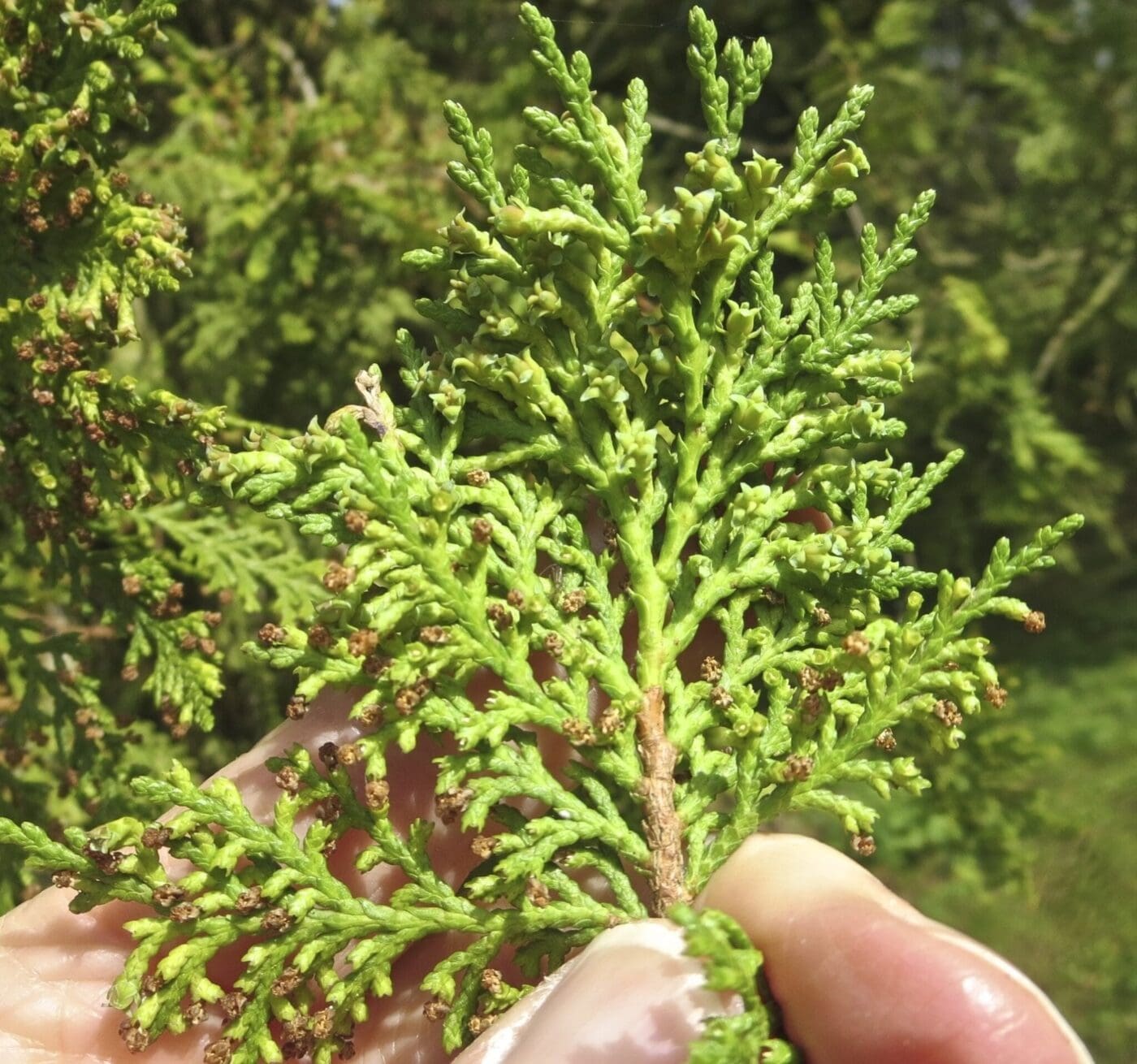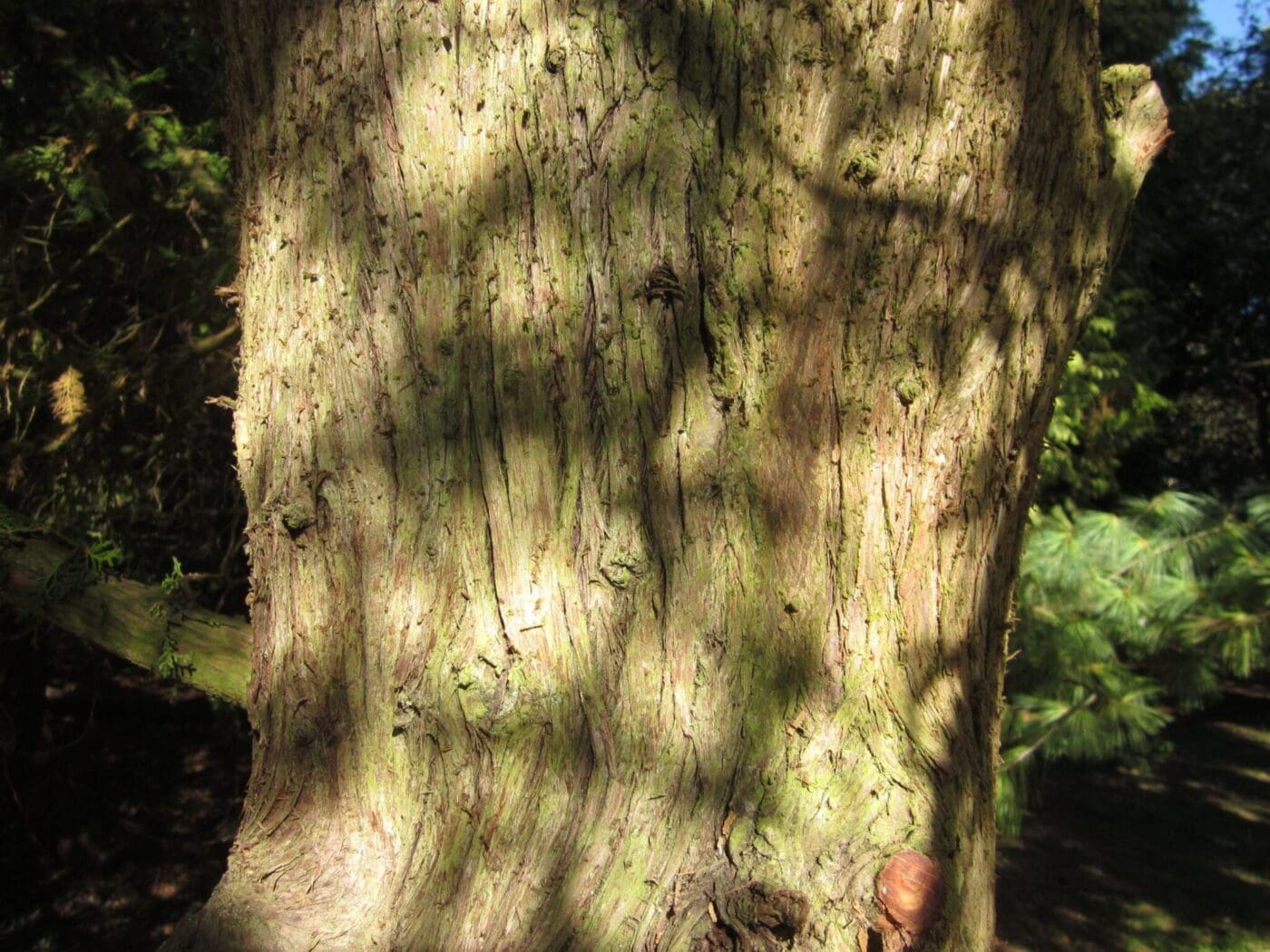Oriental Thuja tree identification
The Oriental Thuja Thuja orientalis is a conifer native to north-western China. It is also known as Chinese Thuja or Chinese Arbor-vitae. Its scientific name is also Platycladus orientalis, reflecting the fact that it is now thought to be not a Thuja but in its own genus. It was introduced to Britain in 1752 and is common in churchyards and parks. There are a number of very popular cultivars available for planting in rockeries and churchyards. Oriental Thuja tree identification – distinctive hooked cones, scale leaves in flat sprays, scentless leaves.
The Thuja genus includes the Western Red Cedar Thuja plicata and 4 other species. Thuja varieties are widely available from Nurseries and Garden Centres. There are 8 varieties of Thuja plicata alone in Hilliers Guide. They are used for hedging and screening. Dwarf varieties and full trees are grown as ornamental plants. Thujas are sometimes called Arbor-vitaes (tree of life) after the resemblance of the foliage to the white matter of the brain called Arbor vitae. Click on any photo to enlarge it.
The scale leaves are arranged on flat sprays. The leaves have no scent when crushed, unlike other Thujas.








